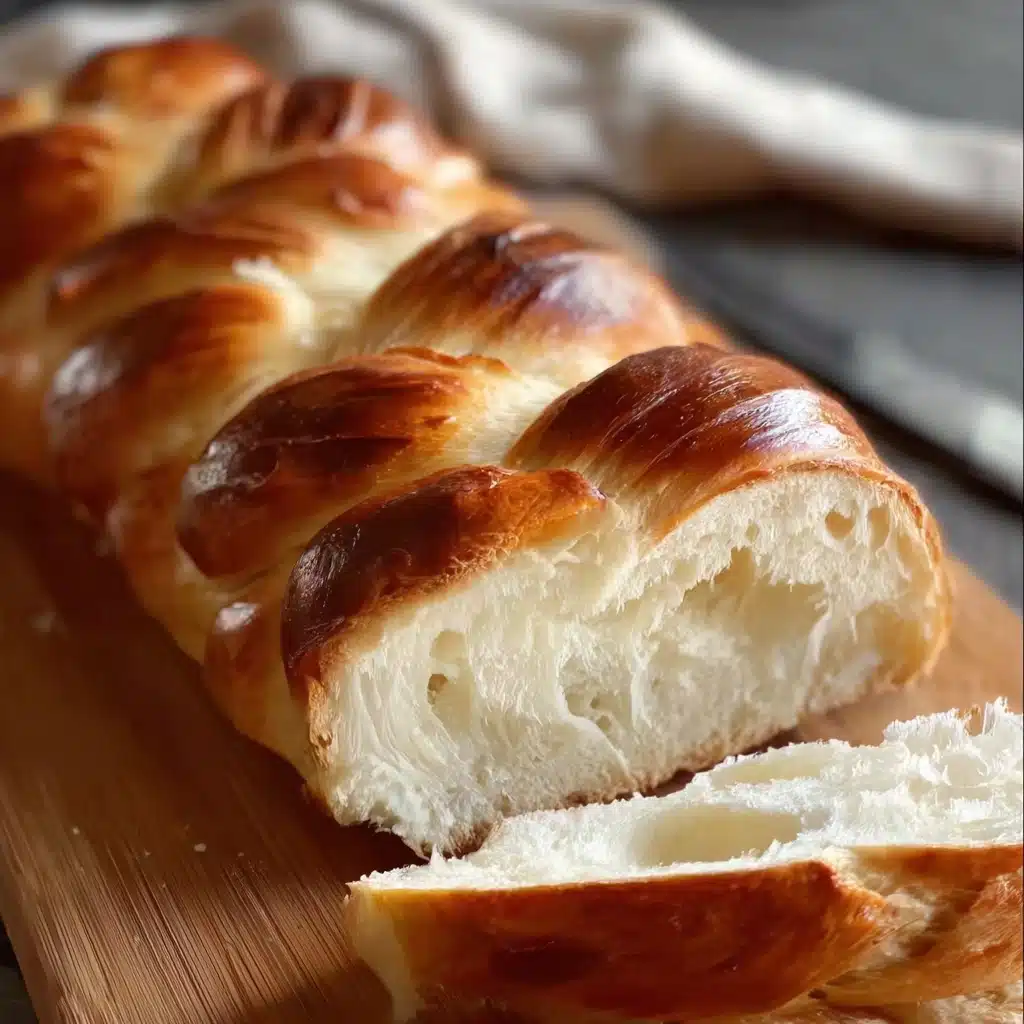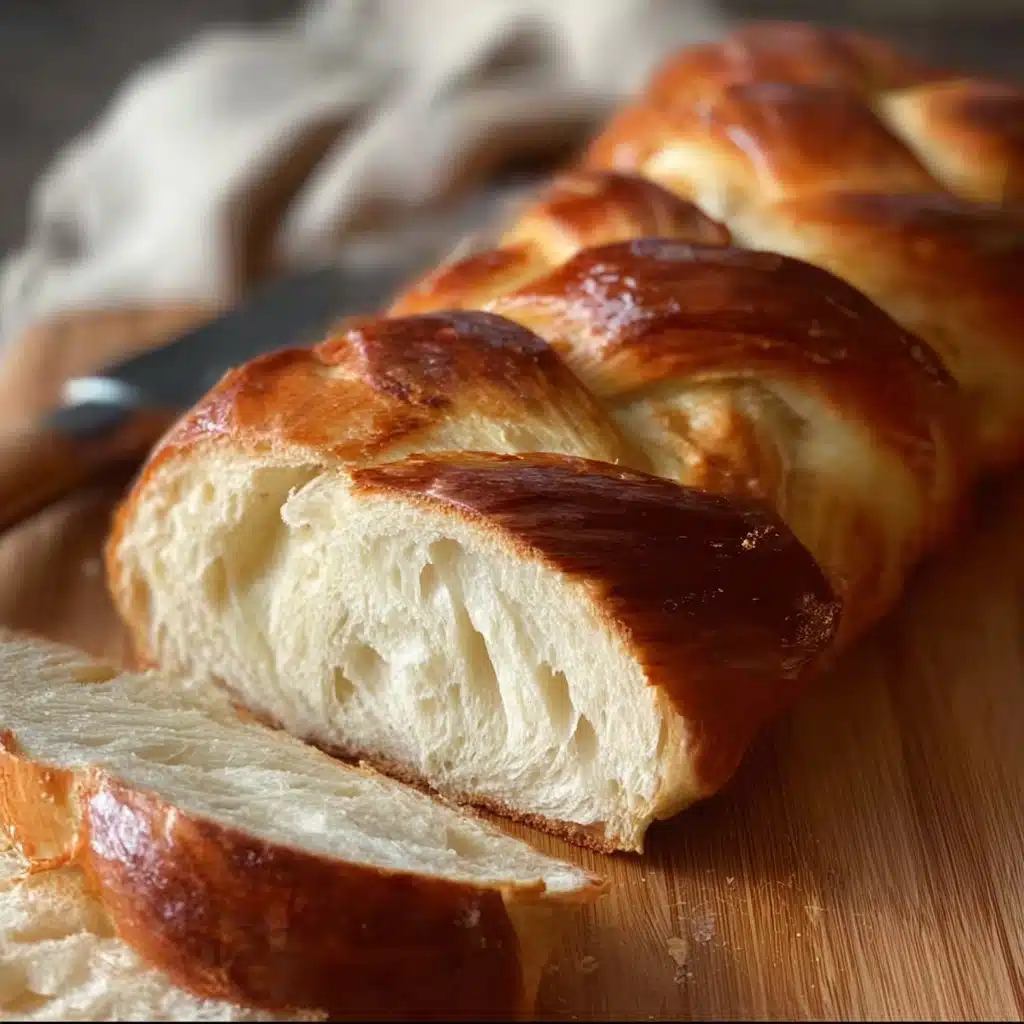If you dream of biting into a golden-crusted loaf that’s cloudlike and tender on the inside, this Soft Fluffy French Bread Recipe is about to become your new kitchen obsession. This is the kind of bread that makes even a simple meal feel special, with a pillowy, feathery crumb and an impossibly soft bite. Whether you’re serving a comforting soup, making an out-of-this-world sandwich, or just slathering on a generous swoosh of butter, this recipe delivers bakery-style results right at home. It’s a comforting, classic bread perfect for both beginner and experienced bakers, and it’ll have friends and family asking for another slice every time.

Ingredients You’ll Need
The magic of this Soft Fluffy French Bread Recipe is that it relies on just a handful of simple, everyday ingredients. Yet each component is essential in creating that characteristic softness, chewy crust, and faintly sweet flavor that sets this bread apart.
- All purpose flour: This is the backbone of your loaf, providing just the right structure for a soft, airy crumb.
- Warm water: Activates the yeast and helps create a light, hydrated dough. Be sure it’s not too hot so you don’t harm the yeast!
- Olive oil or vegetable oil: Adds richness and keeps the crumb ultra-soft (olive oil adds lovely aroma, but any mild oil works).
- White granulated sugar: Feeds the yeast for great rise and adds a hint of sweetness without overpowering the bread.
- Pink salt: A pinch balances the flavors and enhances the bread’s natural taste. Any fine salt is fine.
- Active dry yeast: The key to making the loaf rise light and fluffy every time.
- Egg (beaten, for the top): Brushed on before baking to develop that iconic, glossy golden crust.
How to Make Soft Fluffy French Bread Recipe
Step 1: Prepare the Yeast
The secret to perfect bread starts with bubbly, happy yeast. Stir one teaspoon of sugar into your warm water, then let the yeast have a little spa session on top for about 10 minutes. When it’s foamy like a latte, you’re ready to move on—this is your guarantee of lift and fluffiness!
Step 2: Mix Dry Ingredients
In a large mixing bowl, combine 2.5 cups of flour with the rest of the sugar and the salt. Give it a good stir, making sure everything is evenly mixed. If you love experimenting, try whisking for extra airiness—a small step, big difference in texture!
Step 3: Combine Wet and Dry Ingredients
Now for the fun part: pour your frothy yeast mixture and olive oil right into the well you’ve created in your dry ingredients. Mix everything together with a spoon or spatula until a shaggy dough begins to form. Don’t worry if it feels a little sticky at first!
Step 4: Knead the Dough
Turn your dough out onto a lightly floured surface. Knead for 8 to 10 minutes, working in more flour a little at a time, until it’s supple and elastic. This hands-on time is crucial—proper kneading is what gives the Soft Fluffy French Bread Recipe its signature bouncy crumb.
Step 5: First Rise
Once smooth, place the dough in an oiled bowl, cover it snugly with a damp cloth, and let it rise in a cozy spot for about an hour. When you peek under the cloth, the dough should be puffy and doubled in size—a sure sign that fluffy perfection awaits.
Step 6: Shape and Second Rise
Punch down that beautiful dough (so satisfying!), then gently shape it into a loaf. Lay it on a parchment-lined baking sheet, cover again, and let it rise for another 30 minutes. This second rise is what ensures your bread bakes up feather-light.
Step 7: Preheat Oven and Prepare Egg Wash
While your dough rises, preheat the oven to 375°F (190°C). Whisk up your beaten egg and brush it over the top of your loaf—this is what gives the Soft Fluffy French Bread Recipe its bakery-style shimmer and rich color.
Step 8: Bake
Pop your bread into the hot oven and bake for 25 to 30 minutes. It should be deep golden, and if you tap the bottom, you’ll hear a hollow sound—a delicious sign it’s done!
Step 9: Cool
The hardest part is this: wait! Let the bread cool on a wire rack before slicing in. This little bit of patience keeps the inside soft and steamy, the way every perfect loaf should be.
How to Serve Soft Fluffy French Bread Recipe

Garnishes
The possibilities are endless! Brush warm slices with melted butter and a sprinkle of flaky salt, or rub with a clove of garlic for a rustic, aromatic twist. Even a simple drizzle of good olive oil can make this bread sing.
Side Dishes
This bread is right at home alongside classics like hearty soups, crisp salads, or a generous cheese platter. Try dipping into a chunky tomato soup or sopping up the last drops of a creamy pasta sauce—the Soft Fluffy French Bread Recipe is a true utility player at any table.
Creative Ways to Present
For a fun gathering, slice the loaf into thick pieces, arrange them in a basket lined with a pretty napkin, and let guests tear off hunks to enjoy. Or cut the loaf in half lengthwise, toast under the broiler, and make the world’s best sub sandwich. It’s even fantastic cubed up for easy homemade croutons or bread pudding.
Make Ahead and Storage
Storing Leftovers
After your bread has cooled completely, wrap it in foil or place it in an airtight bag. It stays ultra-soft on the counter for 1 to 2 days. If you want maximum freshness, resist slicing until just before serving.
Freezing
To freeze, simply slice the loaf (this makes for easy grab-and-go toast!), wrap tightly in plastic then foil, and store for up to 3 months. The Soft Fluffy French Bread Recipe defrosts beautifully, never losing that tender texture.
Reheating
Warm up leftover slices in a 325°F (165°C) oven for 8 to 10 minutes, or pop a slice in the toaster. The crust crisps up while the inside turns cloudlike again—almost as good as freshly baked.
FAQs
Can I use bread flour instead of all-purpose flour?
Yes, you can! Bread flour will produce a slightly chewier crumb and higher rise, but all-purpose flour will keep things extra soft—your choice depends on your texture preference.
What should I do if my dough is too sticky?
If your dough feels too sticky after mixing, just sprinkle in more flour, one tablespoon at a time, until the dough is smooth but not dry. Dough texture changes with humidity, so trust your hands.
Can I make the dough ahead of time?
Absolutely. After the first rise, you can refrigerate the dough (well covered) overnight. Let it come to room temperature and finish rising before shaping, egg washing, and baking as usual.
Why is it important for the dough to rise twice?
The double rise helps develop flavor, create an airy crumb, and guarantees that iconic fluffiness. Each rise gives the bread a chance to become lighter and softer.
Can I shape this dough into rolls instead?
Definitely! Divide and shape into rolls, let rise, and bake for slightly less time (start checking at 15 minutes). The Soft Fluffy French Bread Recipe is incredibly versatile—ideal for dinner rolls or sandwich buns.
Final Thoughts
There’s something truly magical about pulling a homemade loaf of soft, fluffy bread from the oven. This Soft Fluffy French Bread Recipe proves that anyone can bake bakery-quality bread with a little patience and love. Try it, share it, and watch everyone light up with that first tender bite!
Print
Soft Fluffy French Bread Recipe
- Total Time: 2 hours
- Yield: 1 large loaf (about 12 servings)
- Diet: Vegetarian
Description
Enjoy bakery-quality, soft and fluffy French bread right from your oven with this easy recipe. With a crisp golden crust and tender, airy crumb, this loaf is perfect as a side dish, for sandwiches, or toasted with butter. Simple ingredients and approachable steps make it ideal even for beginner bread bakers.
Ingredients
Dry Ingredients
- 2.5–3 cups all purpose flour
- 1 Tablespoon white granulated sugar (divided)
- 1 teaspoon pink salt
Yeast Mixture
- 2 teaspoons active dry yeast
- 1 cup warm water (100-110°F / 37-43°C)
- 1 teaspoon white granulated sugar (from above)
Wet Ingredients
- 1 Tablespoon olive oil or vegetable oil
Egg Wash
- 1 egg, beaten (for brushing the top of the bread)
Instructions
- Prepare the Yeast: In a small bowl, combine 1 teaspoon of the sugar with the warm water. Sprinkle the yeast over the top and let it sit undisturbed for around 10 minutes until it becomes foamy and frothy, indicating the yeast is active.
- Mix Dry Ingredients: In a large mixing bowl, combine 2.5 cups of the flour, remaining sugar, and salt. Stir thoroughly to evenly distribute the ingredients.
- Combine Wet and Dry Ingredients: Make a well in the center of your dry mixture. Pour in the activated yeast mixture and olive oil. Mix with a spoon or spatula until the dough begins to come together, adding more flour as necessary if the dough is too sticky.
- Knead the Dough: Transfer the dough onto a lightly floured surface. Knead for 8–10 minutes, adding additional flour as needed, until the dough is smooth, elastic, and slightly tacky but not sticky.
- First Rise: Place the kneaded dough into a lightly oiled bowl, turning to coat on all sides. Cover with a damp cloth and leave to rise in a warm place for about 1 hour, or until doubled in size.
- Shape and Second Rise: Punch down the risen dough to deflate. Shape into a loaf and place on a parchment-lined baking sheet. Cover again and let rise for another 30 minutes until puffy.
- Preheat Oven and Prepare Egg Wash: While the dough performs its second rise, preheat your oven to 375°F (190°C). In a small bowl, beat the egg; then gently brush it over the top of the loaf for a shiny, golden crust.
- Bake: Bake the bread for 25–30 minutes or until the loaf is deep golden brown and sounds hollow when tapped on the bottom.
- Cool: Remove the bread from the oven and transfer to a wire rack to cool completely before slicing, allowing the crumb to set for the best texture.
Notes
- Use Warm Water: Make sure the water is warm but not hot (100–110°F/37–43°C) for best yeast activation.
- Kneading is Key: Don’t skip or rush the kneading process; it helps develop gluten for a soft, fluffy loaf.
- Don’t Rush the Rises: Allow for a full first and second rise for optimal airy texture.
- Seal Properly: Always cover or seal your rising dough to prevent it from drying out.
- Freezing: For longer storage, freeze slices in an airtight bag and toast as needed.
- Prep Time: 1 hour 30 minutes
- Cook Time: 30 minutes
- Category: Side-dishes
- Method: Baking
- Cuisine: American, French-inspired
Nutrition
- Serving Size: 1 slice (1/12 loaf)
- Calories: 124
- Sugar: 1g
- Sodium: 190mg
- Fat: 2g
- Saturated Fat: 0.3g
- Unsaturated Fat: 1.5g
- Trans Fat: 0g
- Carbohydrates: 23g
- Fiber: 1g
- Protein: 3g
- Cholesterol: 12mg







